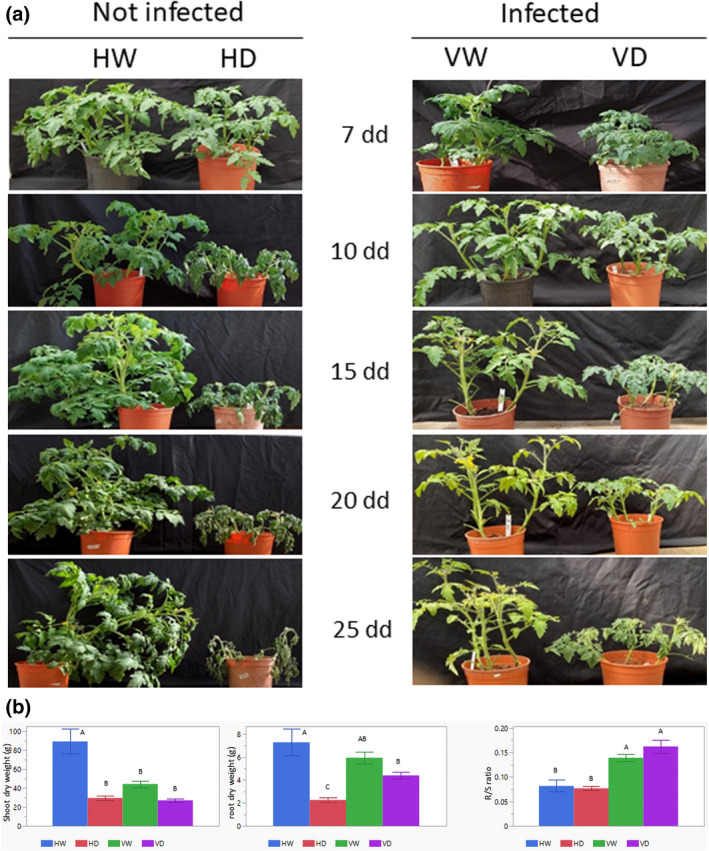FIGURE 1.

TYLCV infection improves the tolerance of virus‐susceptible tomato to drought. Four groups of plantlets were used: HW, not infected (healthy) and watered; HD, not infected and subjected to drought; VW, infected and watered; VD, infected and subjected to drought. Tomatoes were infected by viruliferous whiteflies 5 days before drought application. Three independent biological replicates were performed with similar results. (a) Appearance of drought symptoms and plant collapse were monitored 7, 10, 15, 20, and 25 days after the onset of water withdrawal (days of drought application, dd), in addition to 5 days after TYLCV infection (12, 15, 20, 25, and 30 days postinoculation). (b) Dry weights in grams (g) of shoots (left) and roots (middle) of HW, HD, VW, and VD tomatoes, harvested at the end of experimental growth. Mean ± SD values with different letters are significant (p < 0.05, Tukey HSD test). (Right) Root to shoot ratio (R/S) measured for dry weights of tomato roots and shoots. Mean ± SD of R/S ratio, values with different letters are significantly different (p < 0.05, Tukey HSD test)
